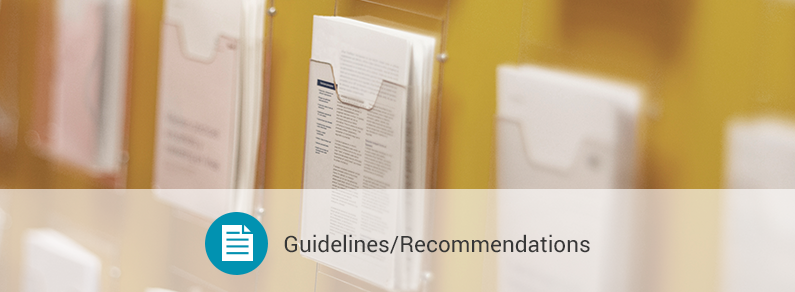This companion* resource guide provides important considerations for service providers and policy makers, including an assessment of the barriers faced by individuals in the GLBTQI community who are seeking mental health care and practical strategies to address these obstacles. The information is based on both a growing body of literature on the topic and the focus groups conducted by the authors. *A Mental Health Recovery and Community Integration Guide for GLBTQI Individuals: What You Need to Know
Resource Types: Guidelines/Recommendations
Issues of Access to and Inclusion in Behavioral Health Services for Lesbian, Gay, Bisexual, Transgender, Questioning and Intersex Consumers
The Pennsylvania Office of Mental Health and Substance Abuse Services (OMHSAS), through contract with the UPenn Collaborative on Community Integration, formed a workgroup to make recommendations to ensure that OMHSAS and other health providers and agencies acted to reduce disparities in outcomes between GLBTQI individuals with a mental illness and the general population. The workgroup recommendations centered around the goals of ensuring that GLBTQI individuals with a mental illness were protected from mistreatment and offered clinically competent mental health care services in welcoming environments.
Preventing Suicide: A resource for police, firefighters and other first line responders
This resource provides guidance for first responders in managing crisis situations and preventing or responding to suicide. Topics include mental illness, risk and protective factors, lethal means restriction, referral procedures and managing stress.
The booklet places suicide in the broader context of community mental health and identifies a number of principles and key activities that can be used as part of a broader community-based suicide prevention strategy. It is part of a series addressed to specific social and professional groups that are particularly relevant to the prevention of suicide and released under the auspices of SUPRE, an IASP/WHO worldwide initiative for the prevention of suicide.
Youth suicide prevention, intervention, and postvention guidelines: A resource for school personnel
This guide describes the components of a comprehensive school-based suicide prevention program. It also includes an assessment form for schools to determine if they are ready to manage suicidal behavior; detailed guidelines for implementing suicide intervention and postvention in schools; and appendices with related materials, including forms and handouts.
The Maine Youth Suicide Prevention, Intervention and Postvention Guidelines were developed for school personnel in Maine but are suitable for schools anywhere. The manual provides rationale for developing protocols and includes discussion on planning for school-based suicide prevention, intervention and postvention. The manual contains a self-assessment, “Is Your School Prepared to Manage Suicidal Behavior?” and numerous appendices, including sample forms for documentation, announcements, issues to consider when a student returns following a mental health related absence, media guidelines, and other resources. The likelihood of students, faculty or staff encountering a suicidal student is real. Advanced planning to prevent youth suicide and to intervene in a crisis can significantly improve the ability of school personnel to respond quickly and effectively, with the least disruption to school routines, when suicidal behavior becomes an issue. The Guidelines were developed through a review of the literature followed by input from various stakeholder groups, including the Maine School Management Association, the Maine Principals’ Association, the Maine Attorney General’s Office, and various school officials. In 2002, the first edition was published and disseminated to all Maine school superintendents. The document was revised in 2006.
Objectives
The Guidelines provide information that should help users to:
1. Understand the nature of youth suicide, including the myths and facts, risk and protective factors, warning signs and appropriate intervention steps.
2. Provide guidance to better enable schools to establish school-based protocols for suicide prevention, crisis intervention, and postvention.
3. Build connections within a community and among regional support services.
4. Educate school personnel, parents, and students about effective suicide prevention and intervention.
Implementation Essential:
• The Guidelines contain some information that is unique to Maine (statistics, applicable laws, and resources); these should be changed to reflect circumstances in the state of use.
Teaching transgender : A resource from the National Center for Transgender Equality
This guide for leading effective trainings includes advice about preparing for the training, teaching terminology, presenting issues of transgender individuals, telling your story, and addressing difficult questions.
Consensus statement on suicide and suicide prevention from an interfaith dialogue
This statement was developed at the Interfaith Suicide Prevention Dialogue meeting (March 12-13, 2008, Rockville, MD), conducted by the SPRC. The participants included representatives from the Buddhist, Christian, Hindu, Jewish, and Muslim faith communities. View the full report of the meeting, The role of faith communities in preventing suicide: A report of an interfaith Suicide Prevention Dialogue.
Adding power to our voices: A framing guide for communicating about injury
Includes framing theory, message development techniques and vehicles for explaining public health statistics.
Practice guidelines: Core elements for responding to mental health crises

Developed by a diverse expert panel that included individuals with mental illnesses, providers, public officials, and advocates, the guidelines presented here define appropriate responses to mental health crises across various situations and environments.
CWLA Best practice guidelines: Serving LGBT youth in out-of-home care
These best practice guidelines provide direction to agencies responsible for the care of LGBT youth in out-of-home care specifically, child welfare and juvenile justice professionals. Based on the Legal Services for Children and the National Center for Lesbian Rights’ Model Standards Project, the guidelines address the institutional failure to consider gender orientation or identity, an consideration necessary in order to provide appropriate and equitable care to LGBT youth in state custody.
Safety planning guide: A quick guide for clinicians

This quick guide for clinicians may be used to develop a safety plan – a prioritized written list of coping strategies and sources of support to be used by patients who have been assessed to be at high risk for suicide.
The authors strongly recommend that the guide be used after reviewing the Safety plan treatment manual to reduce suicide risk. You can learn more about safety planning through the authors’ Safety Planning website
